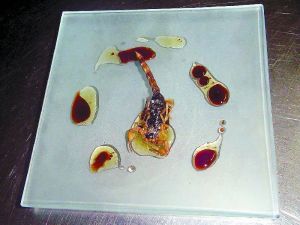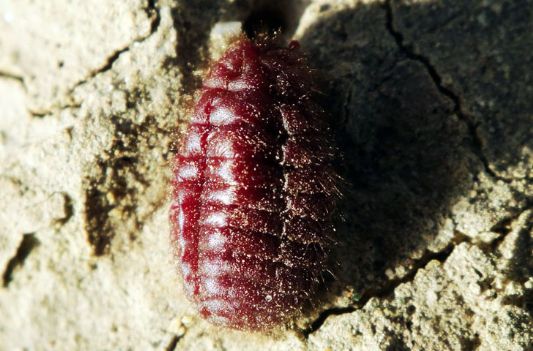Crunchy, full of protein and to be found under a rock near you. Insects have long been overlooked as food in all but a handful of places around the world – but now they are crawling closer and closer to our plates. 2014 will see a drive towards removing the yuck factor and putting insects not just on experimental gastronomic menus but also on supermarket shelves.

The Navarre Restaurant Merindad de Olite, run by Patxi Moliá and Lourdes Maíz, has brought out a new menu made from insects imported from countries like Thailand, Cambodia, Colombia and Australia. The new menú was presented to the public not so long ago. The presentation of the new list of dishes, which has received the name “ Tasty Bugs in Sauce” , explains the origin of insects that are used to flavour the exotic dishes and the possibility of breeding indigenous worms, grasshoppers, scorpions or spiders for food.
Patxi plans to develop three courses. The first will be a spicy winter soup seasoned with crickets, and the second will consist of a mixed wild rice with basmati from India and Thailand topped with roasted scorpions. To wrap up the menú there will be Lettuce Hearts stuffed with mustard, grasshoppers, crickets, barbecued worms and scorpion.
In Spain only two other hoteliers in Barcelona serve insects . "We must go beyond the border of prejudice" indicates Patxi. "We do not intend to change any habits or customs, but give an alternative, the entomofagia (insect eating).” Patxi defines the scorpion as the "pearl" of the menú: "Their venom is neutralised by contact with alcohol or very high temperatures”.

Somehow I think it will take a lot more creativity to get me to eat an insect! However it's estimated that the average human eats one pound (half a kilogram) of insects each year unintentionally! Cochineal insects give a red or pink coloring to foods, lipsticks, and beverages. The small, scaled bugs are listed as cochineal extract or E-120 on the ingredient list which is Carmonic Acid.


The U.S. Food and Drug Administration (FDA) also allows certain levels of natural or unavoidable defects in foods, as long as they doesn't pose a health risk. For example, chocolate can have up to 60 insect fragments per 100 grams, tomato sauce can contain 30 fly eggs per 100 grams, and peanut butter can have 30 insect fragments per 100 grams (3.5 ounces), according to the FDA.
the UN’s Food and Agriculture Organization (FAO) has been funding and encouraging projects since 2011 aimed at promoting the eating and farming of insects in south-east Asia and Africa, where an estimated two billion people already eat insects and caterpillar larvae as a regular part of their diet. In 2012, the FAO published a list of 1,909 edible species of insect and, with sponsorship from the Dutch government plans a major international conference on “this valuable food source” this year.
Insects are plentiful – globally, for every human there are 40 tons of insects – so there is not too much chance of them being endangered, and they are unlikely to have been dosed with chemicals. Over the next 30 years, the planet’s human population will increase to nine billion. Already one billion people do not get enough food. The increase will mean more pressure on agricultural land, water, forests, fisheries and biodiversity resources, as well as nutrients and energy supplies.
The cost of meat is rising, not just in terms of hard cash but also in terms of the amount of rainforest that is destroyed for grazing or to grow feedstuff for cattle. There is also the issue of methane excreted by cows. The livestock farming contribution, in terms of greenhouse gas emissions, is enormous – 35% of the planet’s methane, 65% of its nitrous oxide and 9% of the carbon dioxide.
Edible insects emit fewer gases, contain high-quality protein, vitamins and amino acids, and have a high food-conversion rate, needing a quarter of the food intake of sheep, and half of pigs and chickens, to produce the same amount of protein. They emit fewer greenhouse gases and less ammonia than cows and can be grown on organic waste. China is already successfully setting up huge maggot farms. Zimbabwe has a thriving Mapone caterpillar industry and Laos was given nearly $500,000 by the FAO to develop an insect-harvesting project. It’s already big business in the UK, though not always official: a man was recently detained by Gatwick customs as he stepped off a flight from Burkina Faso with 94 kilos of Mapone, worth nearly £40,000, in his luggage.
A study by FoodServiceWarehouse.com suggested that swapping pork and beef for crickets and locusts could help to reduce greenhouse gas emissions by as much as 95%. But perhaps the fairest thing about eating worms and insects comes when we are dead – then they get a chance to nibble their own back!
sources : National Geographic / ABC periodico / Guardian